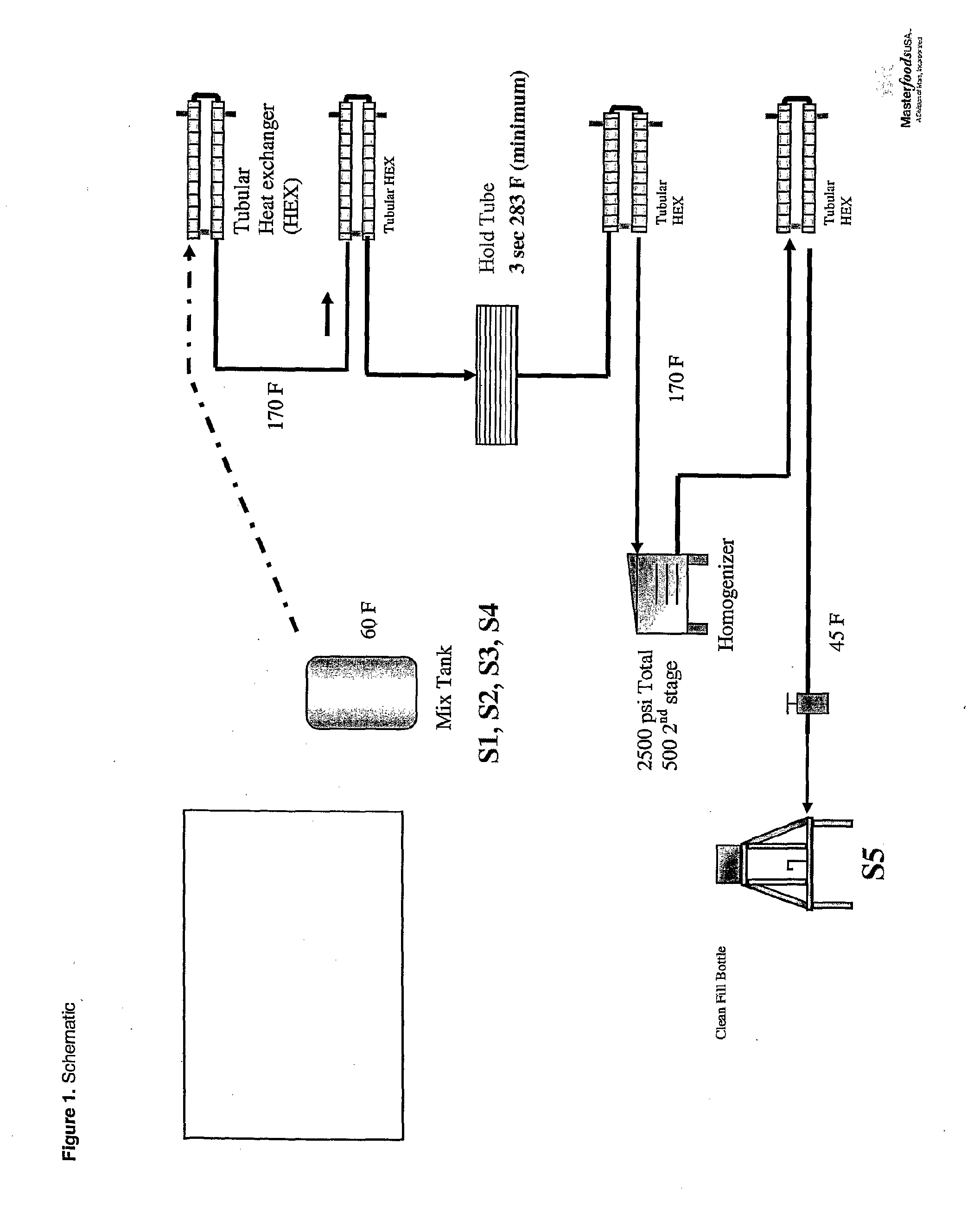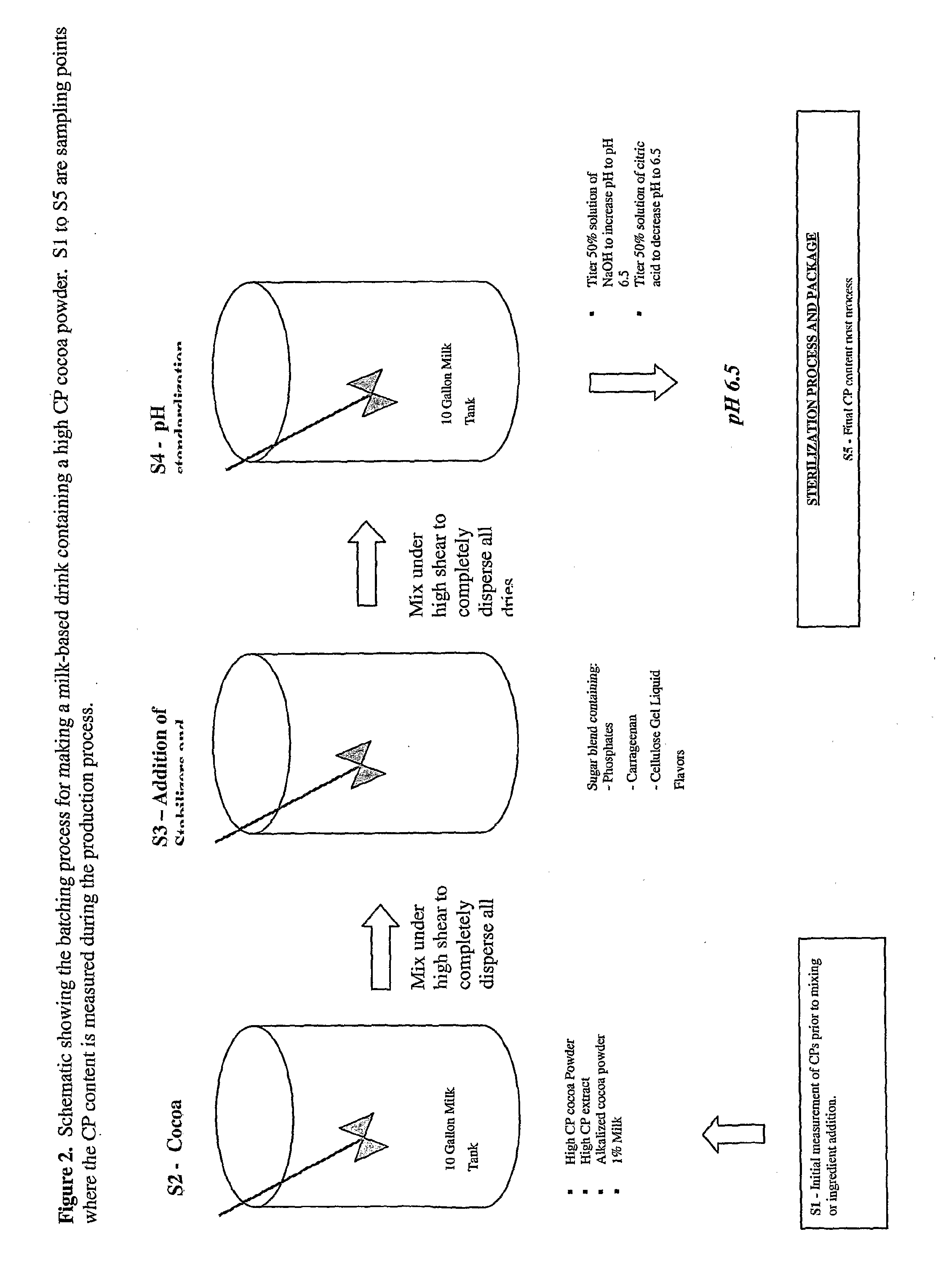Products containing polyphenols
- Summary
- Abstract
- Description
- Claims
- Application Information
AI Technical Summary
Benefits of technology
Problems solved by technology
Method used
Image
Examples
example 1
[0067]Preparation of High CP Cocoa Solids from Cocoa Beans
[0068]Commercially available cocoa beans having an initial moisture content of about 7 to 8% by weight were pre-cleaned in a scalperator. The pre-cleaned beans from the scalperator were further cleaned in an air fluidized bed density separator. The cleaned cocoa beans were then passed through an infra-red heating apparatus at a rate of about 1,701 kilograms per hour. The depth of beans in the vibrating bed of the apparatus was about 2-3 beans deep. The surface temperature of the apparatus was set at about 165° C., thereby producing an internal bean temperature (IBT) of about 135° C. in a time ranging from 1 to 1.5 minutes. This treatment caused the shells to dry rapidly and separate from the cocoa nibs. The broken pieces separated by the vibrating screen prior to the apparatus were re-introduced into the product stream prior to the winnowing step. The resulting beans after micronizing should have a moisture content of about 3...
example 2
Preparation of Cocoa Extracts
[0070]The cocoa solids from Example 1 were contacted at room temperature for from 0.5 to 2.5 hours with an aqueous organic solvent. For Cocoa Extract A the solvent was about 75% ethanol / 25% water (v / v). For Cocoa Extract B the solvent was about 80% acetone / 20% water (v / v). The micella was separated from the cocoa residue and concentrated by evaporation. The concentrated extract was then spray dried. The HPLC / FLD profiles of the cocoa extracts are shown. FIG. 4 shows the trace prior to heating. FIG. 5 shows the trace for the ethanol extract after refluxing overnight in deionized water after heating.
example 3
Preparation of High CP Cocoa Beverages Containing Sterol Esters
[0071]Low fat cocoa beverages were prepared from milk, a high CP cocoa powder, a high CP cocoa extract, an alkalized cocoa powder, lecithin, Canola oil sterol esters, granulated sugar, a blend of cellulose and carrogeenan gums, a citrate / phosphate stabilizer blend, a vitamin-mineral premix and chocolate and vanilla flavors. 1% Milk was used. A recipe is set out in Table 1.
TABLE 1Ingredient% W / W Rangewater10-40low fat milk50-90granulated sugar 5-10high CP cocoa powder0.5-3 alkalized cocoa powder0.5-3 high CP extract0.5-3 Canola oil sterol esters0.2-1 lecithin0.30cellulose0.35Carrageenan0.01-0.3 phosphates01.-0.4vitamin-mineral mixture0.1-1.0cocoa flavor 0.200natural flavors0.1-1.0Total100.00
[0072]The cocoa ingredients were slurried in water at 180° F. The remaining dry ingredients were mixed with 1% milk and added to the cocoa slurry. The pH was adjusted to 6.5-6.8 with citric acid. The cocoa beverage was packaged pr...
PUM
 Login to view more
Login to view more Abstract
Description
Claims
Application Information
 Login to view more
Login to view more - R&D Engineer
- R&D Manager
- IP Professional
- Industry Leading Data Capabilities
- Powerful AI technology
- Patent DNA Extraction
Browse by: Latest US Patents, China's latest patents, Technical Efficacy Thesaurus, Application Domain, Technology Topic.
© 2024 PatSnap. All rights reserved.Legal|Privacy policy|Modern Slavery Act Transparency Statement|Sitemap



